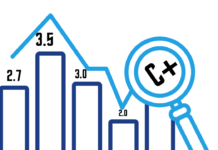It’s been some time since a UW swimmer has graced the Olympic pools, but this year one Warrior took on the challenge. Graeme Kemp was invited to compete as part of Canada’s swim team for the upcoming Pan American games.</p>
Kemp, who is about to enter his fifth year of science and business in the fall, spent part of the first week of April at the Pan Am trials in Toronto, where he earned two personal best times, but ultimately didn’t make the cut for the national team.
“I was expecting more time drops than I got, but I still got two best times at the Pan Am trials, which I was happy with. You can’t be angry with a good swim. I was looking for a little bit more and that comes down to, my coach and I talked about it, maybe the training wasn’t exactly where it needed to be this year,” Kemp said.
According to Jeff Slater, UW’s varsity swim coach, the swimming program at UW is funded in a predominantly self-generated capacity. In Kemp’s case, he isn’t supported through any scholarships or similar financial assistance programs.
“We try and make swimming as free as we can,” Slater said, going on to add that most times financial concerns are settled in compromise. “[Kemp] competed at Canadian nationals last summer in Saskatoon, and we came to an agreement: I think the swim team or I paid for his flight and his entry fees, and he paid for his hotel room and his food.”
So far, UW swimming has not faced any significant challenges with their funding, however Slater mentioned that with a more flexible budget, athletes would have access to certain amenities and perks not currently available.
“We could go to a training camp, we could go visit other programs. There’s things we could do if we had more money. I think we swim at a pretty high level and I think the kids are pretty well supported while they are here, but absolutely, if there was more money it would get used,” said Slater.
Although happy with his results, Kemp does acknowledge the weaker points of his performance.
“I put in the work this year, it might have been in slightly the wrong direction, or not the most optimal direction,” Kemp said. “I always want to do more weight training than I’m doing and it’s hard to just fit it into my schedule, so I would say if there’s one thing I would want to do better, it’s that.”
Kemp’s journey with swimming began at the age of seven when his parents encouraged him to take up the sport. More recently, Kemp has been competing against Olympic-level swimmers and, in 2012, Kemp was invited to experience his first Olympic trials. Since then, he has participated in nationals once or twice a year. The standards at the Pan Am trials closely rivals Olympic and national-level competition.
While waiting to compete, swimmers are brought into a ready room. Eight individual chairs are given to competitors as they wait for their turn in the pool and with such a large venue, the experience can at times be overwhelming.
“It’s just looking around and sizing everyone up almost,” said Kemp. “I’ve noticed the last couple of times I’ve done it how impressionable everyone is in there. So if I were to be sitting down and stand up and start shaking my arms, I could probably make someone else in the room do it.”
Moving past the ready room, while in the pool, the anxiety of the pre-game is met with the rush of competition.
“It’s hard. Maybe this is just for me, but it’s hard to stay focused just on the the race. Your mind is just kind of racing around and it’ll jump from place to place and you try to stay focused,” Kemp said.
Although driven by this missed opportunity, the weight of this event has not been lost to Kemp.
“You’re sitting there on the pool deck with Olympic-caliber swimmers. I was literally sitting beside a girl that got second place in the Olympics in breaststroke. She’s faster than I am at breaststroke which is insane. It’s a very humbling experience and at the same time it’s so exciting. You almost start swimming better through the week that you’re there,” said Kemp.
While Kemp’s results did fall short, he’s decided to view this experience as a learning opportunity.
“I always try and look at it in the way of: ‘okay, what are those people doing that did make it; what are they doing that I’m not doing and what can I do that they won’t be doing so that I can catch them and beat them and be on the team instead of them?’” said Kemp. He later added, “It needs to be an elite level athlete like that, it’s a lifestyle thing. It’s not so much that they’re training better than me in the pool or they have a better program. It’s that they’re living the life of an elite athlete.”
However, for Kemp, extra practice and a change in routine may not be enough to reach that level. For an Olympic-level athlete, their daily activities are organized to meet their athletic needs. This can be a hard and challenging compromise to reach, especially if you are a student.
“When it comes down to it, swimming is the focus in their lives and everything else falls in around that, so they get a job that works with their swim training and they eat to train better and they sleep to train better and they do all these things that centre around their swimming. So for me, I’ve been working towards that,” said Kemp. “If you have a seven to 10 p.m. class and practice at six the next morning, its tough to do, but it’s a learning process all the time.”
In addition to challenges with scheduling, developments to UW’s athletic facilities have limited the access to the larger pool. Without a larger pool, swimmers are limited in their practising methods, although Slater has found compromises to these challenges primarily by sharing spaces with Laurier’s pool.
“The facilities are predominantly the same as when I came here 30 years ago. CIF was the big addition, but since then there really hasn’t been a significant increase in the space. We work very hard to use the space we have more and more creatively, and there are more and more programs asking for time and space. Additional space, again, that’s going to come out of the funding for transfers from the students. It’s probably not going to happen right now; we are at a pretty close to the bone with the money that we have,” Slater said.
In the last five decades, UW has had five Olympic-level swimmers. Keith Beavers was the latest, having competed at both the Athen Olympics in 2004 and the Beijing Olympics in 2008. At Beijing, Beavers placed seventh in the 200 individual medly. If Kemp had made it into the Pan Am Canadian national swim team, he would have been the first Olympic-caliber swimmer from UW to compete at such a level since Beavers.




























